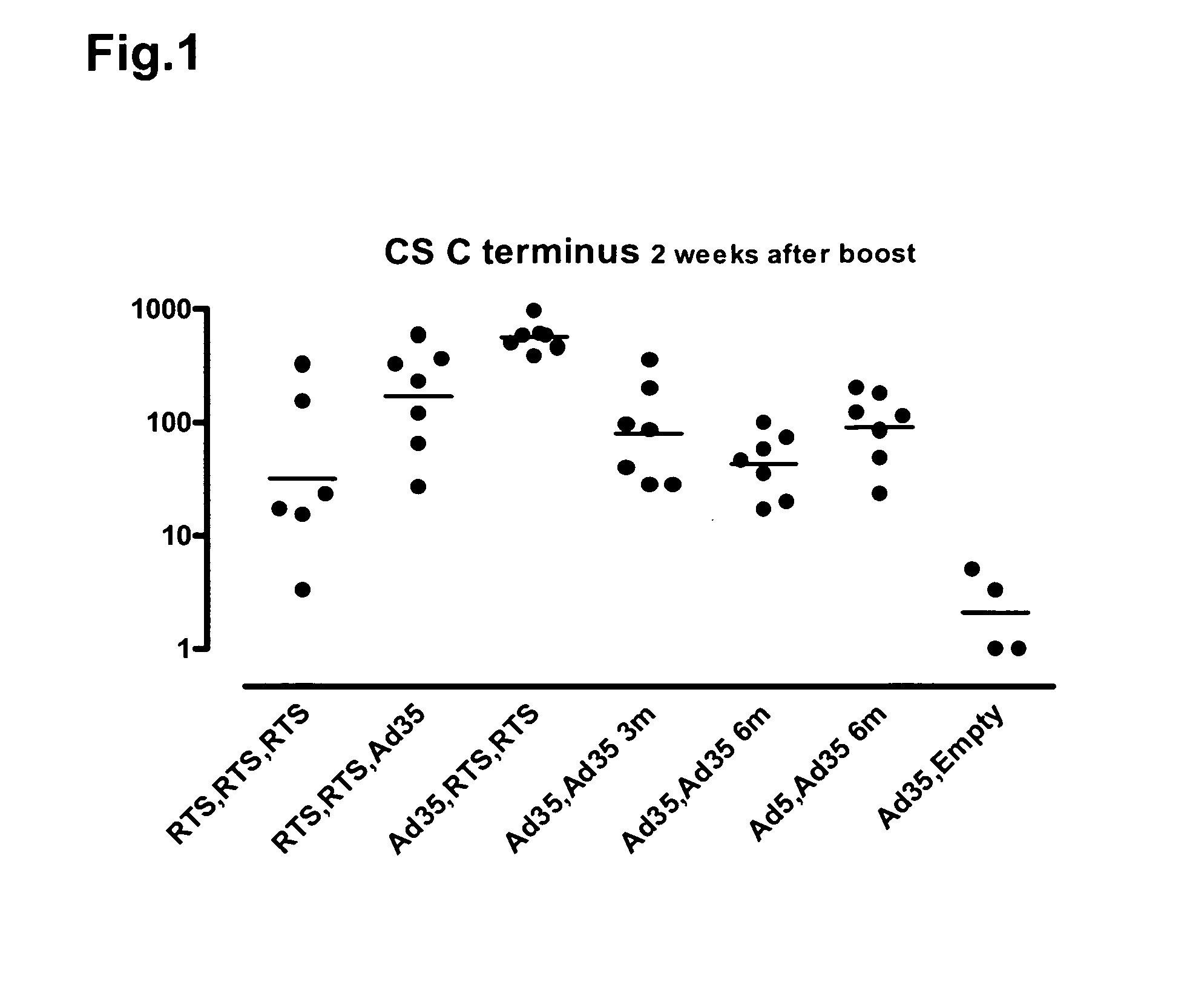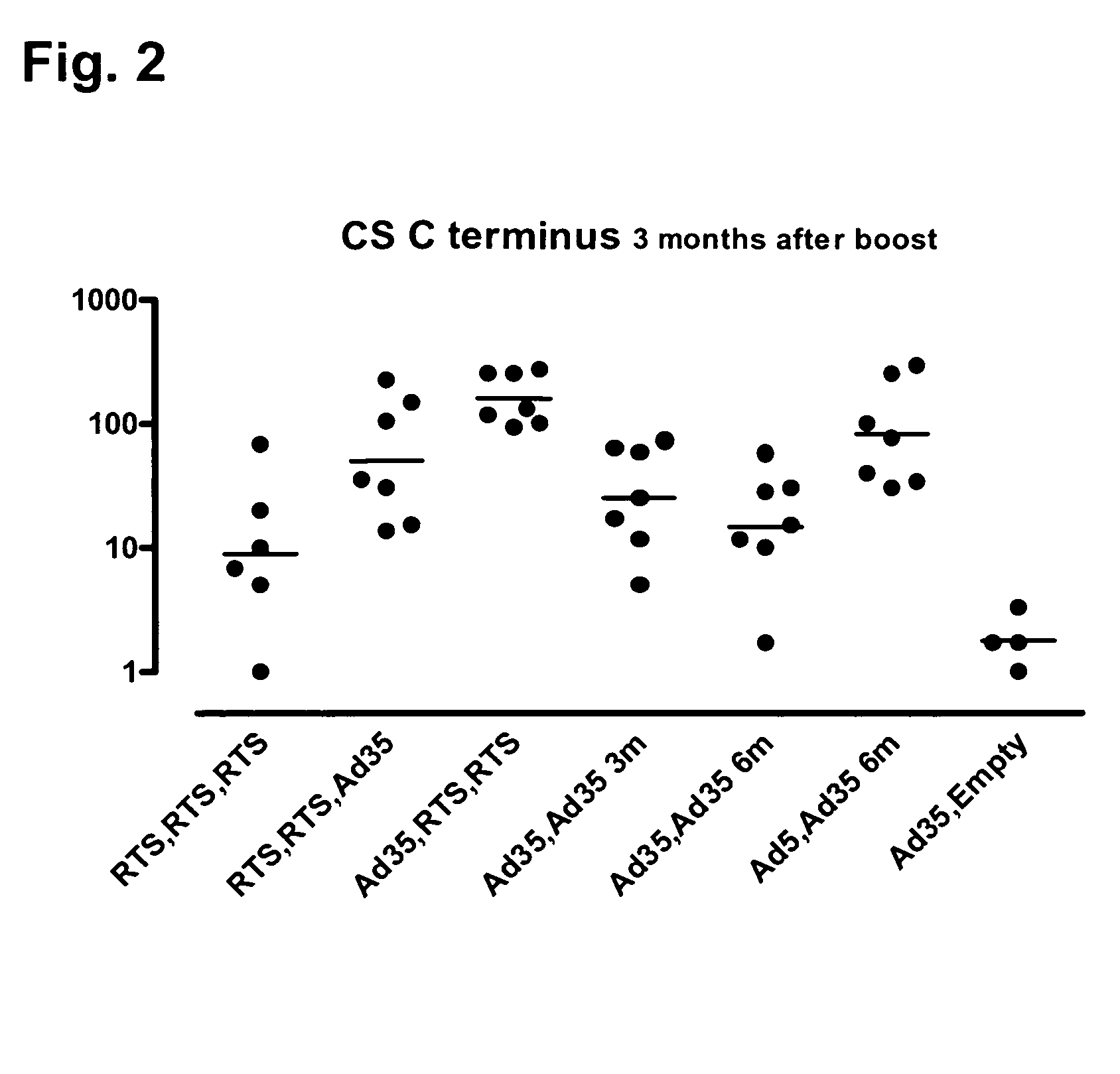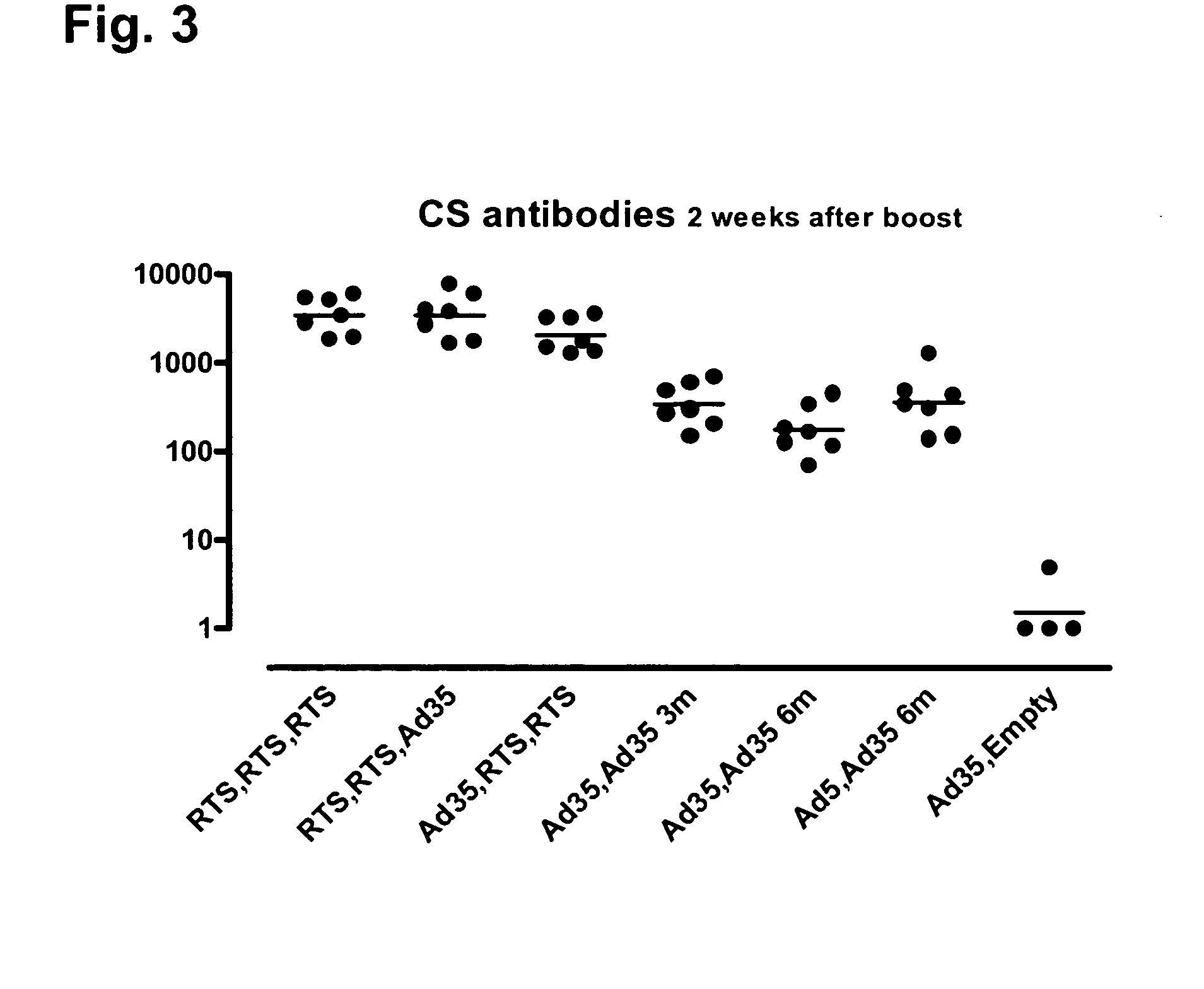Malaria prime/boost vaccines
a vaccine and prime technology, applied in the field of medicine, can solve the problems of not being able to achieve a large-scale culture system, preventing the widespread application of such vaccines, and not protecting against rein
- Summary
- Abstract
- Description
- Claims
- Application Information
AI Technical Summary
Benefits of technology
Problems solved by technology
Method used
Image
Examples
examples
[0096]Heterologous prime / boost vaccination using recombinant adenoviral vectors and purified adjuvanted protein in rhesus monkeys.
[0097]The objectives of the experiment were to evaluate RTS,S followed by Ad35, and Ad35 followed by RTS,S, in a direct comparison with a standard three-dose RTS,S immunization regimen and a standard two-dose Ad35 regimen. A secondary objective was to optimize the two-dose adenovirus regimen. The serologic and cellular immune responses during and after several different regimens of these constructs in combination were studied.
[0098]The rhesus monkey (Macaca mulatta) makes an excellent model for the human immune response because of its much closer phylogenetic relationship. MHC Class II alleles are particularly well conserved; the generation of some shared alleles is estimated at 25 million years ago, predating the speciation of human and rhesus. Thus, there is similar epitope usage in presentation of antigen to Th cells, which greatly enhances the predict...
PUM
| Property | Measurement | Unit |
|---|---|---|
| diameter | aaaaa | aaaaa |
| volumes | aaaaa | aaaaa |
| volume | aaaaa | aaaaa |
Abstract
Description
Claims
Application Information
 Login to View More
Login to View More - R&D
- Intellectual Property
- Life Sciences
- Materials
- Tech Scout
- Unparalleled Data Quality
- Higher Quality Content
- 60% Fewer Hallucinations
Browse by: Latest US Patents, China's latest patents, Technical Efficacy Thesaurus, Application Domain, Technology Topic, Popular Technical Reports.
© 2025 PatSnap. All rights reserved.Legal|Privacy policy|Modern Slavery Act Transparency Statement|Sitemap|About US| Contact US: help@patsnap.com



